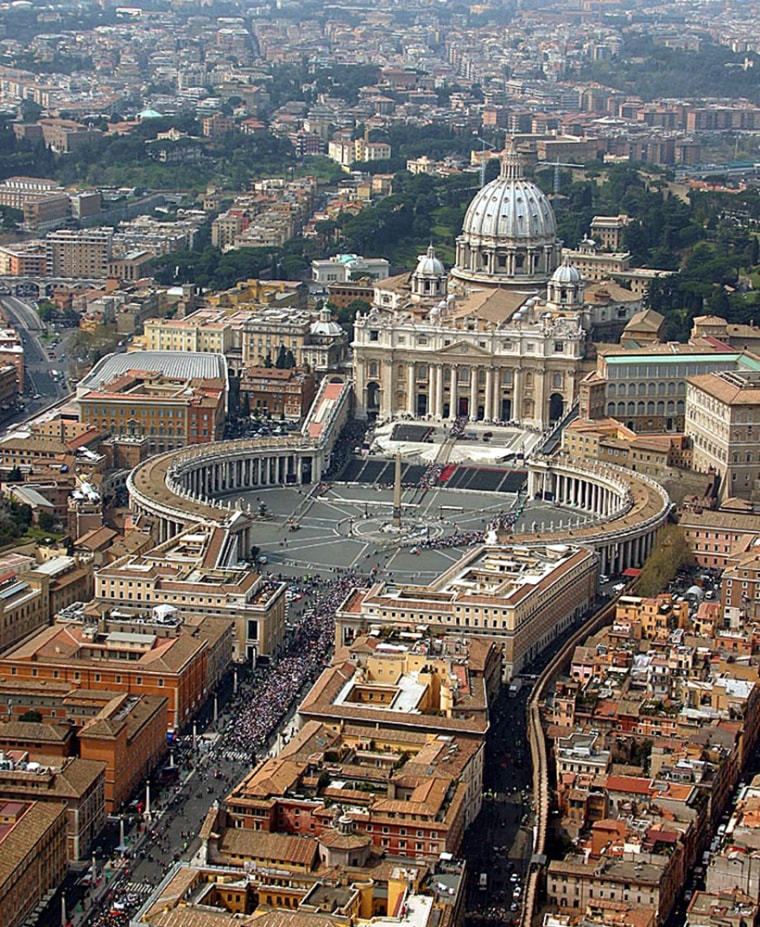The next pontiff will not only have to care for the souls of his 1 billion-member flock worldwide, but also their pocketbooks, taking into account the falling dollar, the cost of sex abuse settlements and the Vatican’s expanding diplomatic mission.
Pope John Paul II demanded financial accountability and promised greater transparency after years of secrecy and a banking scandal, but in the last years of his papacy the Holy See fell back in the red.
“The dollar has really hurt them,” said the Rev. Thomas Reese, a Vatican expert. “We’re not only talking about money coming from the United States. All the rich guys in the Third World also give in dollars.”
Vatican officials bristle at what John Paul once called “the myth” that the Holy See is immensely wealthy.
Huge art collection
The Vatican owns an immense collection of art treasures, and there have been occasional reports that church leaders were considering selling Michelangelo’s statue of the Pieta, sculptures by Bernini or other masterpieces to pay its debts or help the needy. Officials responded that the artworks are “a treasure for all humanity” and cannot be sold.
In a rare disclosure last year, a Vatican accountant said the Holy See’s real estate is worth 700 million euros, or about $908 million. That does not include St. Peter’s Basilica and the Sistine Chapel, which the report termed priceless and valued at a symbolic 1 euro.
The Vatican went through 23 years of spending more money than it took in, until 1993, when the situation improved dramatically after a revised code of church law made clear that Roman Catholic dioceses around the world should assist the Holy See.
But its most recent financial statement — in July — reported a deficit for the third consecutive year. It listed 2003 revenues of $250.2 million and expenditures of $262 million, for a deficit of $11.8 million.
The statement on running the Holy See is not a conventional balance sheet, and it does not include revenues from museums, stamps and other items, which are covered by another report focusing on the Vatican city-state.
Heavy personnel costs
Vatican experts blame the deficit on heavy personnel costs — 2,674 people work in Holy See offices, more than half of them lay people. But the Vatican also greatly expanded its diplomatic activity during John Paul’s papacy and now has a costly network of representatives in 174 nations.
In presenting the financial report, the chief of the Holy See’s economic affairs office cited Europe’s sluggish economic recovery, a poor investment climate and the rising strength of the euro against the dollar. Salaries are paid in euros.
“Our financial statement could not help but reflect all of this,” said Cardinal Sergio Sebastiani.
The College of Cardinals, which is running the church until a new pope is elected, said in its daily report Tuesday that Sebastiani briefed them on the 2004 statement and several details of the 2005 budget. No details were given.
The sex abuse crisis has taken a heavy financial toll, particularly in the United States and Ireland. The payout to victims of clergy sex abuse in the United States has climbed to a total of $840 million since 1950, with three dioceses — Spokane, Wash., Portland, Ore., and Tucson, Ariz. — seeking bankruptcy protection.
The Vatican doesn’t bail them out, but the payouts raise questions about the ability of American dioceses to keep up financial contributions and could discourage individual faithful from giving through what is known as Peter’s Pence — donations offered directly to the pope that the Vatican has said totaled $55.8 million in 2003, up 5.7 percent from the previous year.
U.S. chief source of donations
Vatican officials say the United States remains the main source of donations, followed by Germany. Because of the dollar’s weakness, the value of assistance from dioceses worldwide dropped from 85.4 million euros in 2002 to 79.6 million euros in 2003, the July financial statement said.
Experts say the Vatican has dollar-denominated stocks in its portfolio, making sure the Holy See avoids investments in companies that manufacture contraceptives or armaments.
While providing no list of holdings, Vatican accountant Paolo Trombetta said during the presentation of the most recent financial statement that the Holy See seeks “safe if low yield” investments, much of it in government bonds.
John Paul ordered an annual financial disclosure in 1981 as part of his efforts to debunk ideas that the Vatican is wealthy. He set up a financial committee of cardinals, which presents the figures for examination by a panel of international auditors.
The pope also shook up the leadership of the Vatican bank after it was stung by dealings with Italy’s Banco Ambrosiano, which collapsed in 1982 with its president, Robert Calvi, found hanged under a London bridge.
Banco Ambrosiano was $1.3 billion in debt, much of which had been loaned to a series of shell companies in Panama and Luxembourg that were controlled by the Vatican bank. The Vatican did not acknowledge any wrongdoing but agreed to a goodwill payment of about $250 million to creditors.
